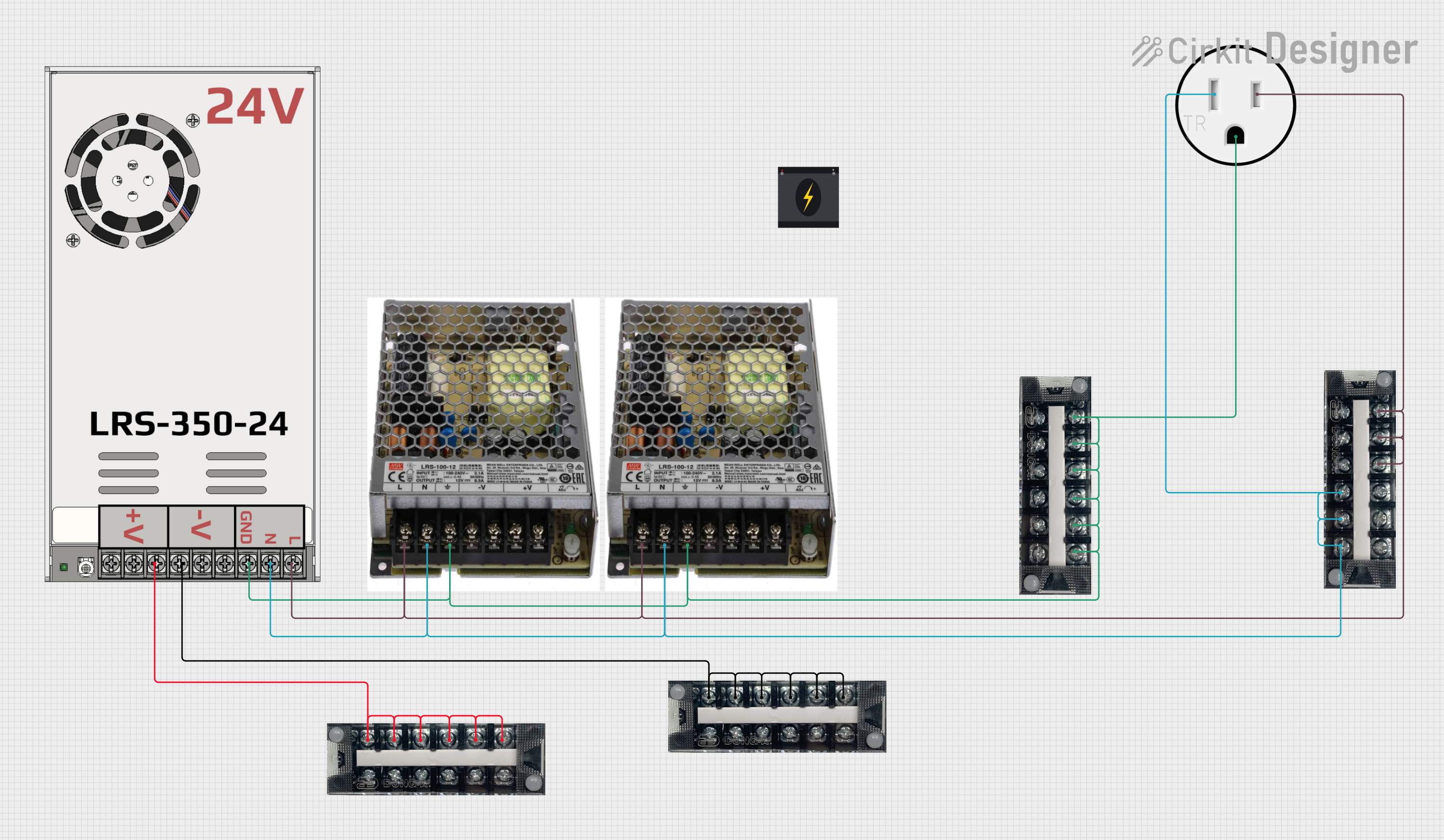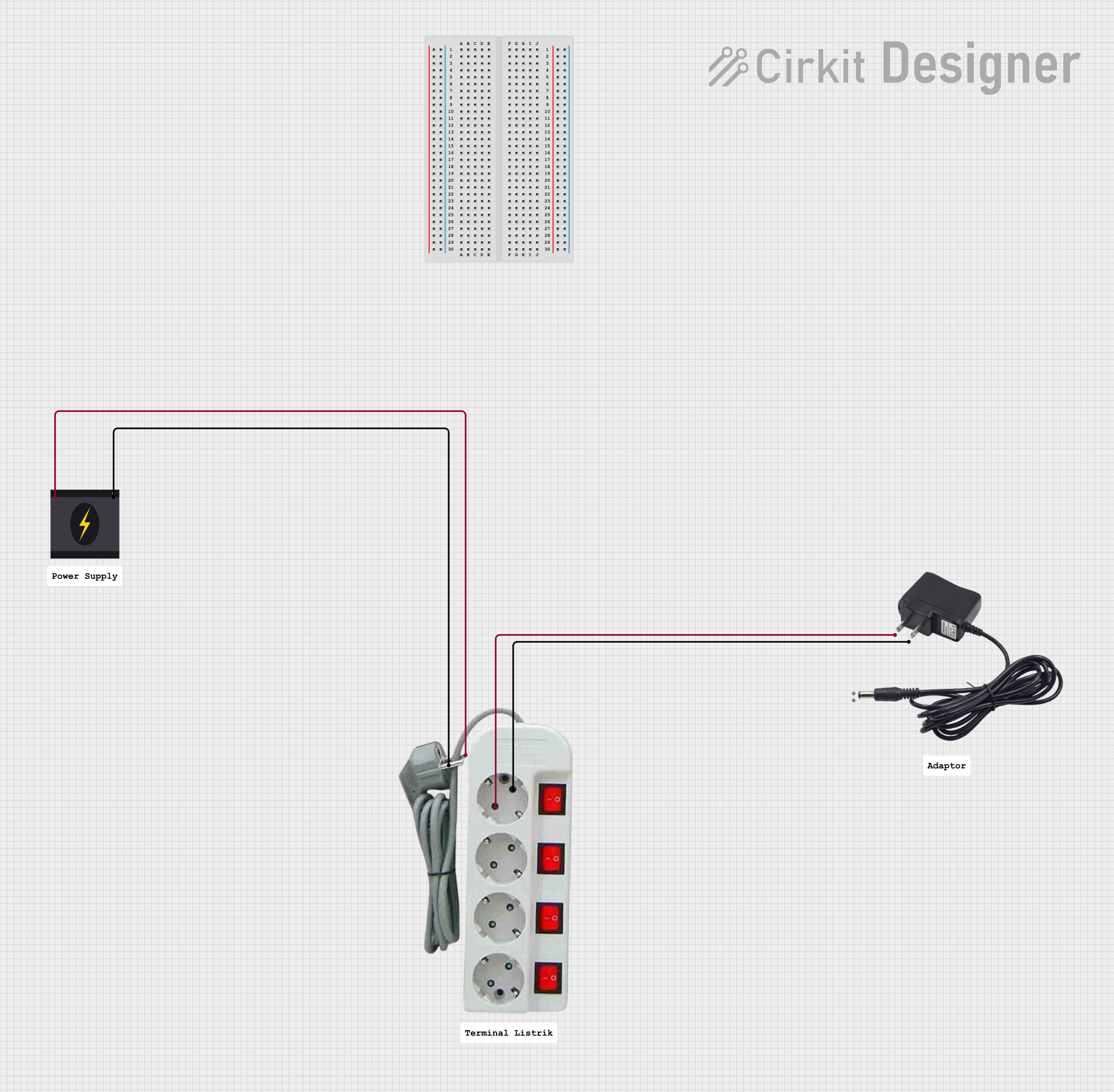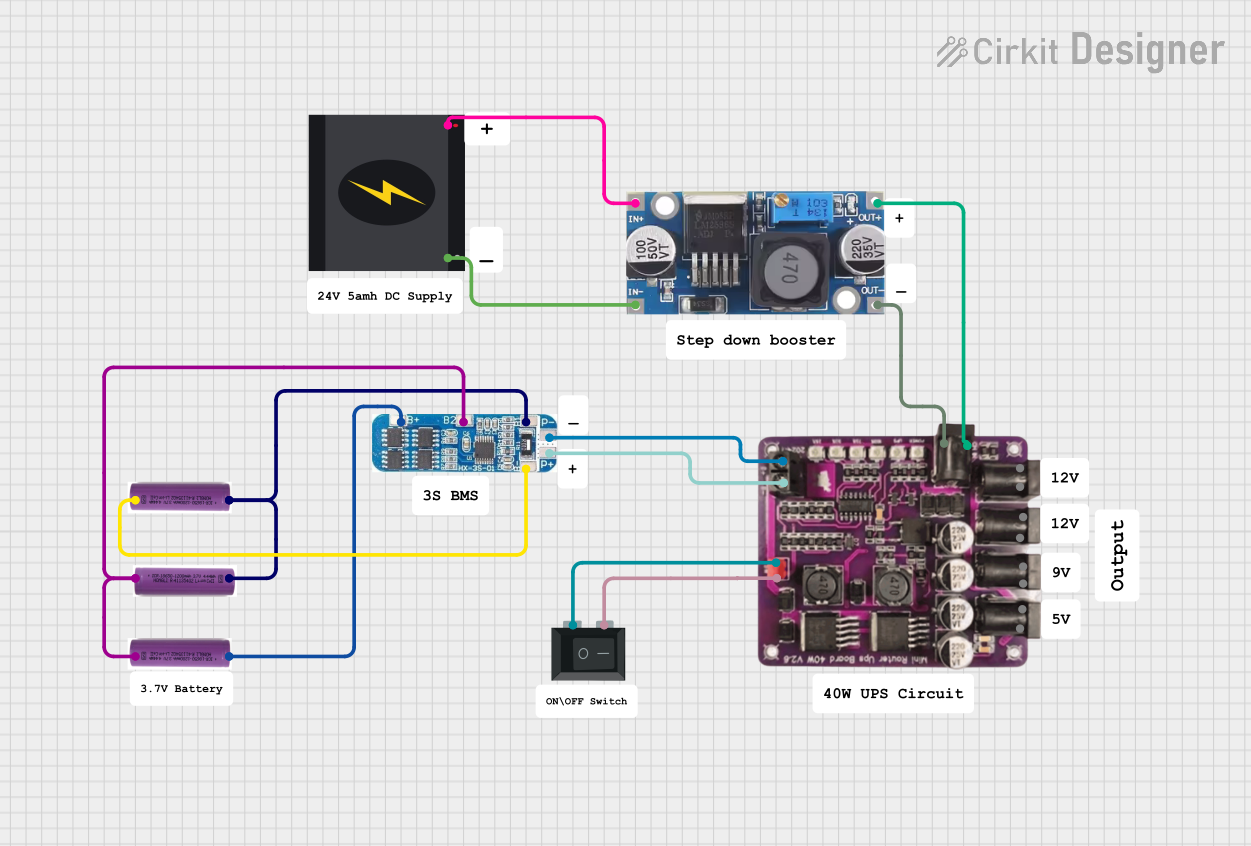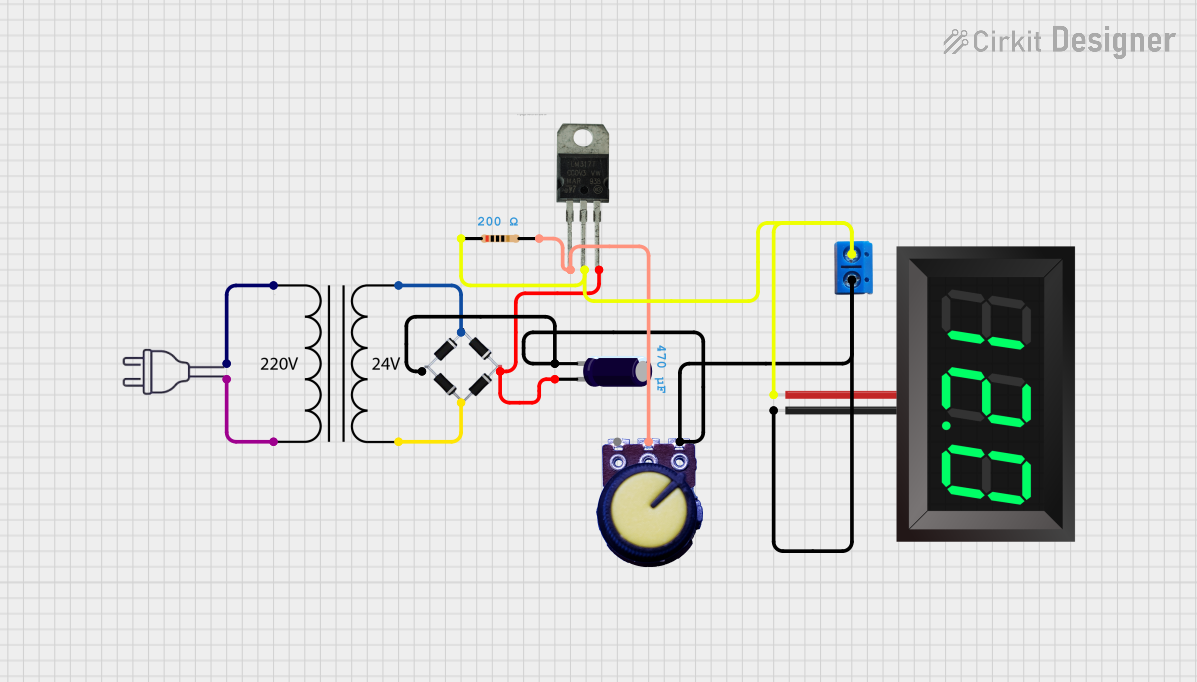
How to Use 240v Power Source: Examples, Pinouts, and Specs

 Design with 240v Power Source in Cirkit Designer
Design with 240v Power Source in Cirkit DesignerIntroduction
The Nuke Big Big is a robust power source designed to provide a stable output voltage of 240 volts. This component is essential for powering high-voltage applications and is commonly used in industrial environments, laboratory equipment, and heavy-duty machinery. Its reliability and efficiency make it suitable for applications requiring a consistent 240V supply.
Explore Projects Built with 240v Power Source

 Open Project in Cirkit Designer
Open Project in Cirkit Designer
 Open Project in Cirkit Designer
Open Project in Cirkit Designer
 Open Project in Cirkit Designer
Open Project in Cirkit Designer
 Open Project in Cirkit Designer
Open Project in Cirkit DesignerExplore Projects Built with 240v Power Source

 Open Project in Cirkit Designer
Open Project in Cirkit Designer
 Open Project in Cirkit Designer
Open Project in Cirkit Designer
 Open Project in Cirkit Designer
Open Project in Cirkit Designer
 Open Project in Cirkit Designer
Open Project in Cirkit DesignerTechnical Specifications
General Specifications
- Manufacturer: Nuke
- Part ID: Big Big
- Output Voltage: 240V AC
- Frequency: 50/60 Hz
- Maximum Output Current: Specified by the model (e.g., 5A, 10A, etc.)
- Efficiency: ≥ 90% (typical)
- Operating Temperature Range: -20°C to +60°C
Pin Configuration and Descriptions
| Pin Number | Description | Notes |
|---|---|---|
| 1 | Live (L) | Connect to the phase line |
| 2 | Neutral (N) | Connect to the neutral line |
| 3 | Earth (E) | Connect to the ground |
| 4 | Output +240V | Output terminal for 240V |
| 5 | Output Return (0V) | Return path for the output |
Note: The actual pin configuration may vary depending on the specific model and design. Always refer to the manufacturer's datasheet for accurate pinout information.
Usage Instructions
Integration into a Circuit
- Safety First: Ensure that all power is turned off before connecting the power source to your circuit.
- Wiring: Connect the Live (L), Neutral (N), and Earth (E) pins to your mains supply. It is crucial to follow local electrical codes and regulations.
- Output Connection: Connect the output terminals to your device or circuit that requires 240V, observing proper polarity.
- Switch On: Once all connections are secure, turn on the power source. Check the output voltage with a multimeter to ensure proper operation.
Important Considerations and Best Practices
- Isolation: Always use an isolation transformer or proper isolation techniques when working with high-voltage components.
- Protection: Incorporate overcurrent, overvoltage, and short-circuit protection in your design to prevent damage.
- Ventilation: Ensure adequate ventilation around the power source to prevent overheating.
- Compliance: Verify that your application complies with local electrical standards and safety regulations.
Troubleshooting and FAQs
Common Issues
- No Output Voltage: Check the mains supply connections and ensure the power source is switched on. Verify the fuse and replace it if necessary.
- Incorrect Output Voltage: Ensure that the load connected to the power source does not exceed the specified maximum output current.
- Overheating: Check for adequate ventilation and remove any obstructions. Ensure the ambient temperature is within the specified operating range.
FAQs
Q: Can I use the Nuke Big Big power source for residential applications? A: The Nuke Big Big is designed for high-voltage applications. It is not recommended for residential use unless properly integrated and compliant with residential safety standards.
Q: What should I do if the power source is not functioning as expected? A: Refer to the troubleshooting section above. If the issue persists, contact Nuke's customer support for assistance.
Q: Is there a warranty for the Nuke Big Big power source? A: Yes, Nuke provides a warranty for their products. Please refer to the warranty documentation provided with the power source for details.
Note: This documentation is for informational purposes only. Always consult a professional electrician or engineer when working with high-voltage components. Nuke is not responsible for any damage or injury resulting from improper use of the Big Big power source.